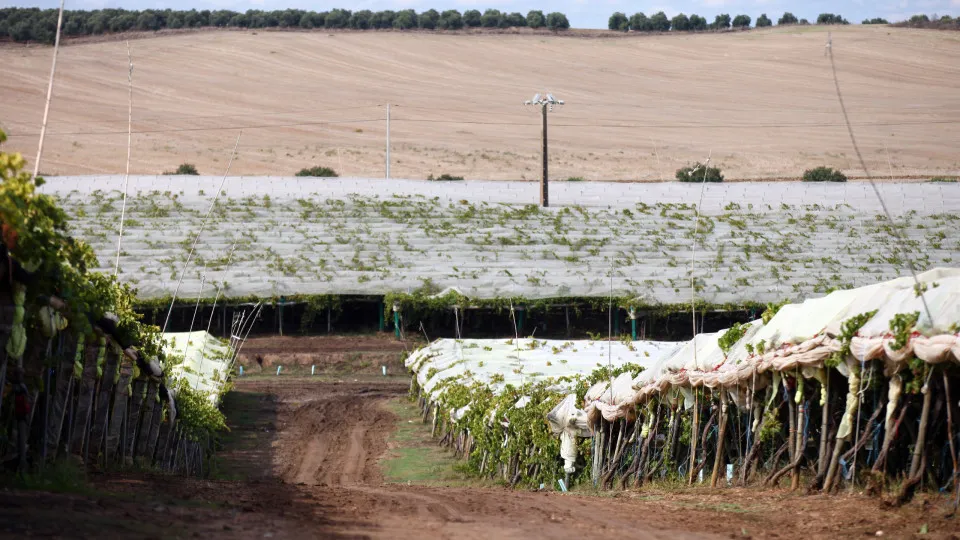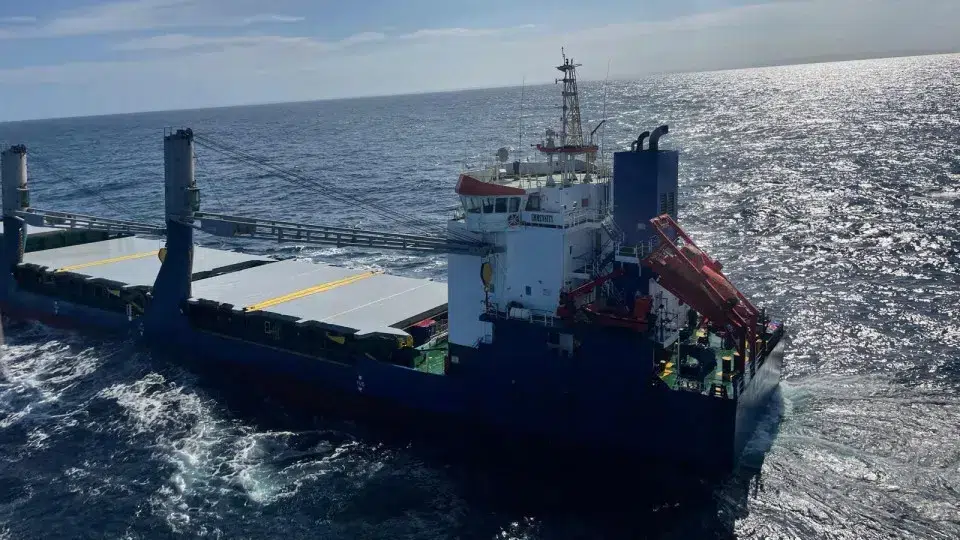
Viticulturists in Alentejo report an average 30% decrease in grape production, with some cases reaching up to 40% in this year’s harvest season compared to 2024, the sector’s technical association revealed today.
“What we have been able to ascertain at this time, [after] a month and a half from the start of the harvest, is a reduction that we estimate to be around 30%,” said Patrícia Cotrim from the Alentejo Viticulture Technical Association (ATEVA) today during a statement to the Lusa news agency.
The technical and executive director of the association highlighted that there are indeed “more severe and extreme cases” where the decrease is higher.
In a statement sent today to Lusa, ATEVA referred to the average 30% decrease in the quantity of grapes harvested and specified that in “the most severe situations,” the campaign experiences “decreases around 40%,” compared to last year.
The technical association, in this note, conducts a “preliminary assessment of the productive impact of the 2025 campaign” through data collected on the ground from its members, who own 17,000 of the 23,000 hectares of vineyards in Alentejo.
According to Patrícia Cotrim, the production decrease is widespread across the region, although there are also “viticulturists who do not have declines or do not have significant declines.”
This year’s harvest began “a bit later than usual” and is expected to continue “for another three weeks to a month,” she noted, mentioning that ATEVA’s data mostly pertains to the varieties of white wines, which are harvested first, but red varieties are also included.
The technical and executive director of ATEVA explained that the decrease is due to this “particularly difficult agricultural year,” marked by “plenty of rain until April, which did not allow or made it very difficult to enter the vineyards to perform certain treatments and operations adequate for that time.”
Then, “extreme and prolonged heat” followed, which was also unfavourable, she added, specifying that Alentejo always experiences periods of heat, but this year, “they were significantly longer than usual.”
As a result, there was less fruiting: “We have grapes that do not weigh, as the saying goes; [that is] we have full trailers that, instead of weighing 10 tons, weigh seven, and this is largely due to this combination of factors,” emphasized the director.
According to ATEVA, “viticulture in Alentejo, a fundamental pillar of the regional economy and a major expression of the area’s agricultural and cultural identity, is thus facing one of the most challenging years of the last decade.”
“The decrease in production, associated with the low price of grapes paid to viticulturists, threatens not only the economic sustainability of the sector but also the social and environmental equilibrium of an activity that structures the landscape, secures the population, and projects Alentejo as a national and international reference wine-producing region,” the association highlighted.
When asked by Lusa if, given this scenario, the recent government measure to grant Douro viticulturists 50 cents per kilo of grapes delivered for distillation is another ‘blow’ to the sector, Patrícia Cotrim agreed.
“We have a sector in crisis, with grape prices remaining low, and we already had a very high rate of vineyard abandonment last year, about 800 hectares uprooted and about 100 hectares abandoned,” which has “a significant impact on Alentejo [and] on exports, and this should concern all of us,” she argued.
Therefore, “this duality of standards” by the government, supporting Douro and leaving other regions out, “concerns [the viticulturists] in Alentejo,” assured Patrícia Cotrim, expressing hope that “the situation will be reviewed.”
On August 29, the president of the Alentejo Regional Wine Commission, Luís Sequeira, stated to Lusa that Alentejo is “astonished” and “shocked” by the government’s support to Douro viticulturists of 50 cents per kilo of grapes delivered for distillation.




